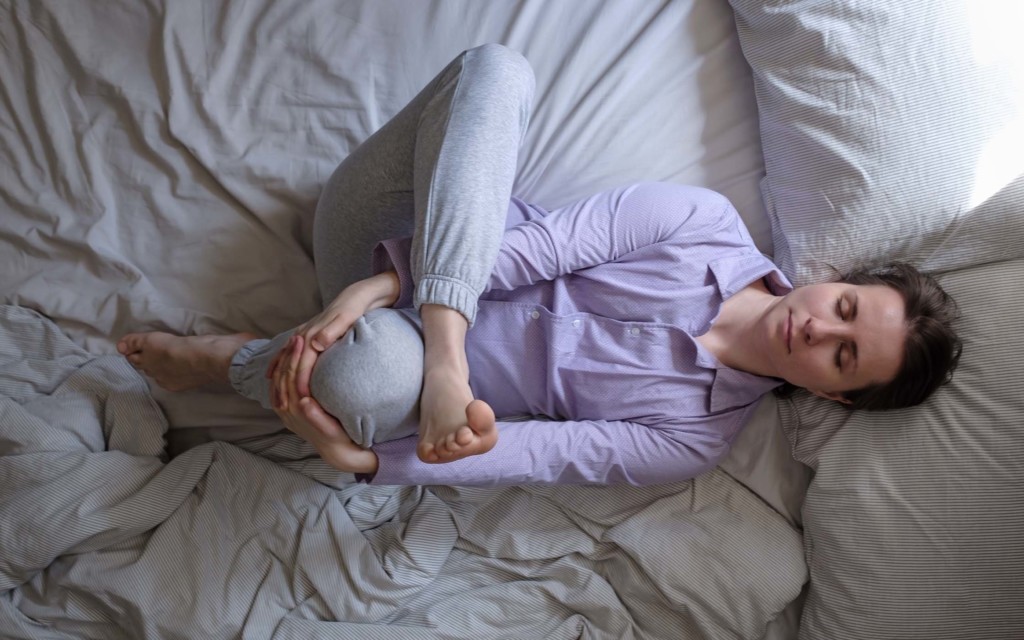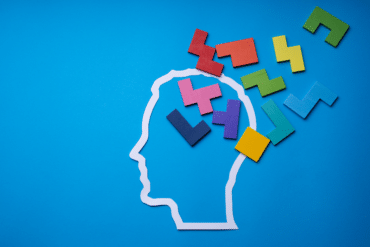There are plenty of reasons why you might struggle to get to sleep at night.
Some people don’t have the best sleep hygiene — they spend hours staring at their phone before they go to bed, and the blue light keeps their mind awake and alert.
Other people have mattresses that are too soft, pillows that are too hard, or rooms that are too warm to facilitate a good night’s sleep.
If the reason you can’t enjoy a good slumber is that you’re overwhelmed by stress and anxiety, then a change in bedding isn’t going to make a huge difference.
The good news is that there are treatments available for people who need a little help shutting off when they go to bed each night.
Here’s your guide to how progressive muscle relaxation can help you to get a better snooze.

What is progressive muscle relaxation?
Progressive muscle relaxation is a therapy designed to relieve the physical and emotional stress that can keeps us tossing and turning.
PMR is one of the components of CBT-I treatment for insomnia. The aim is to learn exercises that will help your body and mind to unwind before bed.
Progressive muscle relaxation is a proven technique. It is used to control anxiety, stress, and other issues that can prompt insomnia.
As a component of a complete CBT strategy for insomnia, progressive muscle relaxation involves tensing or tightening various muscles in your body. Thereafter actively relaxing those same muscles, so you can feel the relief of “letting go”.
Progressive muscle relaxation definitely isn’t a new concept. It was introduced by a man called Edmund Jacobson in the 1930s. It is based on the idea that physical relaxation is crucial to mental calmness.
The good news is that anyone can learn this sleep-boosting strategy, and it only takes about 10 or 20 minutes per day to master.
There is a bit of an art to the treatment. Most practitioners will recommend tensing and relaxing your muscles at certain times, in a specific order.
Although much of the process involves finding out what works best for you.

How to follow a progressive muscle relaxation script
Usually, when you’re referred to a specialist for CBT for insomnia, your cognitive behavioural therapist will give you a progressive muscle relaxation script to follow.
You can follow the guidelines provided at home, or even use apps on your phone for some extra help.
Usually, people perform their PMR treatments in bed, before they go to sleep.
You can also use the same techniques throughout the day to overcome periods of stress and anxiety.
During the relaxation session, you focus on each muscle group in your body one at a time. Tense select muscles for a few seconds, then slowly relax them.
It’s best to do this in a quiet space, free from distraction. When you’re ready, work on the following muscle groups:
The face
Wrinkle your forehead, lift your eyebrows, and close your eyes tightly to create tension. Then gradually and carefully relax every part of your face.
If you can squish up your cheeks and tense your jaw, this will be helpful too.
Shoulders and arms
After your face, go down to your arms and shoulders, and bring them towards your ears, tensing all of your muscles.
Flex your biceps and your forearms, then relax, letting your arms fall back to your sides.
Chest and abdomen
Inhale deeply and tense the muscles in your chest and abdomen. When you’re ready, slowly exhale and then relax those muscles. Remember to tense your stomach too!
Back
The back can hold a lot of tension. Flex the muscles in your back and arch them off the floor or bed, then relax and allow your body to fall back down (carefully).
Hips and buttocks
Tighten the muscles around your hips and buttons, then pay careful attention to how you feel when you release the tension.
Legs and feet
Flex the muscles in your legs, squeezing them together, then relax slowly. Flex your feet for a few seconds and relax them, then curl your toes and allow them to gradually return to normal.
You can also work from the bottom up if you prefer to do it that way.
The key to progressive muscle relaxation is making sure that you systematically tighten and relax all the major muscle groups in your body.

Progressive muscle relaxation benefits
Mastering progressive muscle relaxation takes a little time and practice. If you can learn how to make the most of this aspect of CBT for insomnia, there are a lot of benefits to reap.
It’s easy to underestimate how much muscle tension can cause problems with your mind and body. The more tensed your muscles are, the more likely you are to suffer from pain and discomfort.
We’re so used to dealing with stress and anxiety, we don’t always notice the tension we’re holding throughout the day.
Progressive muscle relaxation works by causing people to pay more attention to the sensations that they feel within their bodies. Therefore it promotes relaxation.
Used correctly, PMR has even been found to influence the way the autonomic nervous system works.
The autonomic nervous system is made up of the sympathetic nervous system — which is responsible for the flight or fight response. We activate this when we’re scared.
The other part is made up of the parasympathetic system, which is responsible for calming your mind and body after a threat has been removed.
Progressive muscle relaxation activates your parasympathetic system, which lowers your heart rate, reduces tension, and slows your breathing.
PMR can even reduce your blood pressure, which is better for your long-term health too!
People who practice progressive relaxation regularly tend to experience:
- Reduced blood pressure
- Less muscle pain and tension
- Less stress and anxiety
- A reduced level of fatigue
- Quicker and higher-quality sleep
- A better sense of wellbeing overall
Tension and the way that you feel can have a huge impact on your ability to sleep.
It’s no wonder countless specialists rely on the progressive muscle relaxation benefits for insomniacs, who need help drifting off at night.

Using progressive muscle relaxation with CBT for insomnia
Notably, progressive muscle relaxation is just one kind of treatment, it is often used within CBT, or CBT-I for people struggling with their sleep.
A person can experience accelerated results if this therapy is combined with other kinds of CBT, like biofeedback.
Biofeedback allows you to monitor the various physiological activities in your body, like an increase in heart rate or muscle tension. You can easily realize the areas where you need to relax most.
Some people find it helpful to recognize periods of stress via a personal scanner or sensor.
If you’re using biofeedback therapy with progressive muscle relaxation therapy, you’ll usually have your initial sessions with a therapist.
This specialist will be able to help you understand your response to certain stimuli.
A therapist can also teach you different relaxation exercises that you can fine-tune to address various bodily functions.
Biofeedback often combines progressive muscle relaxation with things like guided imagery, which helps to focus your mind.
Combine PMR with mindfulness meditation and regular deep breathing exercises, and it gives good result too.
Because progressive muscle relaxation is just one part of a full CBT for insomnia treatment, there’s no one-size-fits-all way to handle it.
Some people find it helpful to imagine a wave of relaxation flowing over their body from their head to their feet.
Other people enjoy having someone guiding them through the progressive muscle relaxation process.
Often, the key to success is personalising your experience to suit you. You may begin with thinking about how you’re breathing when your hand is on your stomach.
Alternatively, you could start using progressive muscle relaxation on just the parts of your body that hold the most tension.

Should you try progressive muscle relaxation?
As a solution for people suffering from sleep deprivation and other sleep disorders, progressive muscle relaxation is one of the safest and easiest treatments available. Learning how to relax can help you in various areas of your life.
With it, you can overcome anxiety and stress and deal with complicated situations. You might even overcome the common side effects of insomnia.
Progressive muscle relaxation is also a fantastic tool to learn more about listening to your body and the signals it gives you.
With time and practice, you can begin to identify the signs of stress throughout your body and gain more control.
If you find it hard to come up with your own progressive muscle relaxation script, speak to a doctor about referral to a sleep specialist for additional help.
You can also find various PMR sessions available to download online, from places like the Dartmouth College Health Service.
Siestio. Sleep Matters.
Medical disclaimer
You must not rely on the information provided on our website as an alternative to medical advice from your doctor or other healthcare professionals. For more information read our full disclaimer here.







